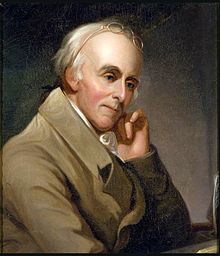Expedition Medicine (sometimes known as expeditionary medicine) is the field of medicine focusing on providing embedded medical support to an expedition, usually in medically austere or isolated areas. Expedition medicine provides the physical and psychological wellbeing of expedition members before, during, and after an expedition.[1] Expedition medicine may be practiced in support of commercial, non-governmental organizations, and government expeditions.[2] Some medical governing bodies consider expedition medicine as a field within wilderness medicine, whilst others considered it be a separate discipline.[3][4]
| Synonym | Expeditionary medicine |
|---|---|
| Subdivisions | Travel Medicine General environmental medicine Battlefield medicine High Altitude Medicine |


History edit
Ancient Era edit
This field of expedition medicine has ancient origins and has been practised almost since the advent of medicine and expeditions. Many ancient civilizations embedded medical staff with military units.[5]
Medieval Era edit
As expedition and merchant crews grew during the later medieval era, barber surgeons and other medical staff were added to the crew compliment. [6]
Age of Discovery edit
During the Age of Discovery, expedition medicine planning became more integral to explorers on land and sea, especially in the prevention of scurvy.[7] Many explorers, to include Cristopher Columbus, traveled with surgeons as part of their crew.[8][9]
Modern Era edit
Benjamin Rush provided medical training and equipment to the Lewis and Clark Expedition.[10]
During the period of American settlement in the early 19th century, expeditionary medicine preparedness and support became standard concerns for wagon trains.[11][12]
In the late 19th century, the influence of notable medical practitioners like Friedrich von Esmarch and members of the Venerable Order of Saint John pushing for every adult man and woman to be taught the basics of first aid eventually led to institutionalized first-aid courses and standard first-aid kits in the military and eventually in other medically austere locations.[13]
Each of the expeditions led by Ernest Shackleton included two surgeons.[14] Dr. Alistair Mackay, the assistant surgeon on the British Antarctic Expedition of 1907–1909, is known for being the first person (along with Douglas Mawson and Edgeworth David) to reach the South Magnetic Pole on 16 January 1909.
Michael Phelps Ward was the expedition doctor on the 1953 first ascent of Mount Everest with Sir Edmund Hillary.
Modern advances, such as the use of remote physiological monitoring devices, have allowed expedition medicine providers to monitor and treat medical situations quickly.[15] Dr Sean Hudson co-founder of Expedition & Wilderness Medicine, now known as World Extreme Medicine received an MBE from Queen Elizabeth II for his services to expedition medicine.[16][17]
See also edit
References edit
- ^ "What is an expedition doctor?". World Extreme Medicine. Expedition & Wilderness Medicine Posts. 7 October 2021. Retrieved 7 October 2021.
- ^ Grogan, Claire (15 Nov 2016). "Expedition medicine: save lives ... and go places". The Guardian. Archived from the original on 2021-10-21. Retrieved 30 March 2023.
- ^ Imray, C. H.; Grocott, M. P.; Wilson, M. H.; Hughes, A.; Auerbach, P. S. (2015). "Extreme, expedition, and wilderness medicine". Lancet. 386 (10012): 2520–2525. doi:10.1016/S0140-6736(15)01165-4. PMID 26738718. S2CID 11441616.
- ^ "Wilderness Medical Society: About". Wilderness Medical Society. Retrieved 3 March 2022.
- ^ Cossar, Jonathan (1 March 1994). "Influence of Travel and Disease: An Historical Perspective". Journal of Travel Medicine. 1 (1): 36–39. doi:10.1111/j.1708-8305.1994.tb00553.x. PMID 9815305.
- ^ Westphalen (1 January 2023). "English Medieval Ships Warfare and Medicine". Journal of Military and Veterans Health. 31 (1): 40. Retrieved 30 March 2023.
- ^ Magiorkinis E, Beloukas A, Diamantis A. (16 November 2010). "Scurvy: past, present and future". Eur J Intern Med. 22 (2): 147–52. doi:10.1016/j.ejim.2010.10.006. PMID 21402244.
{{cite journal}}: CS1 maint: multiple names: authors list (link) - ^ "Sea-surgeons Enter the Age of Exploration". piratesurgeon. Retrieved 3 March 2022.
- ^ Lopez, CA (4 October 1976). "Medical Notes on Columbus's First Trip to America". JAMA. 236 (14): 1598–1599. doi:10.1001/jama.1976.03270150032026. PMID 785049.
- ^ "Rush and the Corps of Discovery". lewis-clark.org. 22 May 2021. Retrieved 3 March 2022.
- ^ "What Pioneers Packed to Go West". Notes From The Frontier. 21 October 2019. Retrieved 3 March 2022.
- ^ "DOCTORS AND DISEASES ON THE OREGON TRAIL". END OF THE OREGON TRAIL. Retrieved 3 March 2022.
- ^ "FRIEDRICH VON ESMARCH—MILITARY SURGEON". JAMA. 185 (2): 132–133. 1963. doi:10.1001/jama.1963.03060020092035.
- ^ "Shackleton's Crew - MEET THE MEMBERS OF THE BRITISH ANTARCTIC EXPEDITION 1907-09". nzaht. Archived from the original on 2023-02-02. Retrieved 30 March 2023.
- ^ "Developing Wearable Sensors for Remote Physiological Monitoring in Arduous Environments". wem academy. Retrieved 3 March 2022.
- ^ "Queen's honour for former West Cumbrian GP". 23 June 2017.
- ^ "Medicine in Cold Environments Part 1".